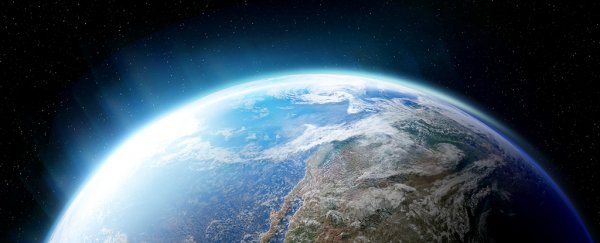
For now, Earth’s atmosphere is a life-supporting haven, rich in oxygen that sustains complex life forms. However, scientists warn that this breathable environment is not permanent. According to research published in 2021, Earth’s atmosphere will eventually revert to a state rich in methane and low in oxygen, similar to its condition before the Great Oxidation Event (GOE) approximately 2.4 billion years ago.
While this drastic shift won’t occur for another billion years, when it does, it is expected to happen rapidly. This prediction is based on detailed models of Earth’s biosphere, which consider factors such as the Sun’s increasing brightness and the subsequent decline in carbon dioxide levels. As carbon dioxide decreases, so too will the number of photosynthesizing organisms like plants, leading to a significant reduction in atmospheric oxygen.
The Science Behind the Prediction
Environmental scientist Kazumi Ozaki from Toho University in Japan, a key researcher in the study, explained that the lifespan of Earth’s biosphere has long been a topic of discussion. This conversation is informed by scientific knowledge about the Sun’s gradual brightening and the global carbonate-silicate geochemical cycle.
“One of the corollaries of such a theoretical framework is a continuous decline in atmospheric CO2 levels and global warming on geological timescales,” said Ozaki.
The study suggests that atmospheric oxygen is unlikely to be a permanent feature of habitable worlds in general. This has significant implications for our search for extraterrestrial life, as it indicates that oxygen may not always be a reliable biosignature.
Modeling Earth’s Future Atmosphere
The research team, including Earth scientist Chris Reinhard from the Georgia Institute of Technology, used an average of just under 400,000 simulations to reach their conclusions. Their model projects that a deoxygenation of the atmosphere, with oxygen levels dropping sharply to those reminiscent of the Archaean Earth, will likely occur before the onset of moist greenhouse conditions in Earth’s climate system and before the extensive loss of surface water from the atmosphere.
“The drop in oxygen is very, very extreme,” Reinhard told New Scientist. “We’re talking around a million times less oxygen than there is today.”
This drastic reduction in oxygen will spell the end for human beings and most other life forms that rely on it for survival. The researchers hope humanity will have found a way to leave Earth before this occurs.
Implications for Exoplanet Exploration
The study’s findings are particularly relevant as scientists continue the search for habitable planets outside our Solar System. With increasingly powerful telescopes coming online, researchers are eager to refine their criteria for identifying life-supporting planets.
According to the study, it may be necessary to look for biosignatures other than oxygen to increase the chances of finding life. This research is part of the NASA NExSS (Nexus for Exoplanet System Science) project, which explores the habitability of planets beyond Earth.
“The atmosphere after the great deoxygenation is characterized by an elevated methane, low levels of CO2, and no ozone layer,” said Ozaki. “The Earth system will probably be a world of anaerobic life forms.”
Looking Forward
Ozaki and Reinhard’s calculations suggest that Earth’s oxygen-rich habitable history may only last for 20-30 percent of the planet’s total lifespan. After the oxygen decline, microbial life is expected to persist long after more complex life forms have vanished.
This research, published in Nature Geoscience, underscores the dynamic nature of planetary atmospheres and the need for a broader perspective in the search for life beyond Earth.
An earlier version of this article was published in March 2021.







